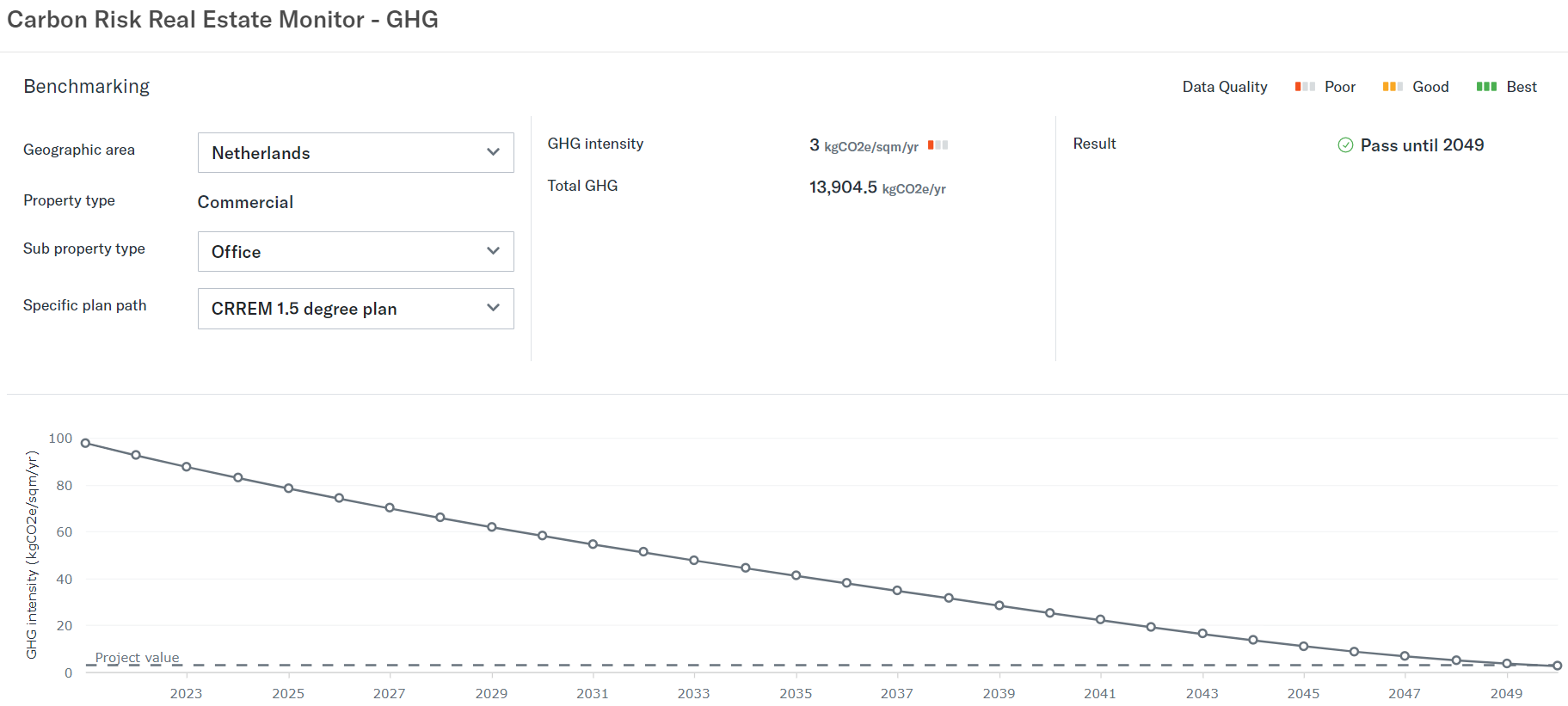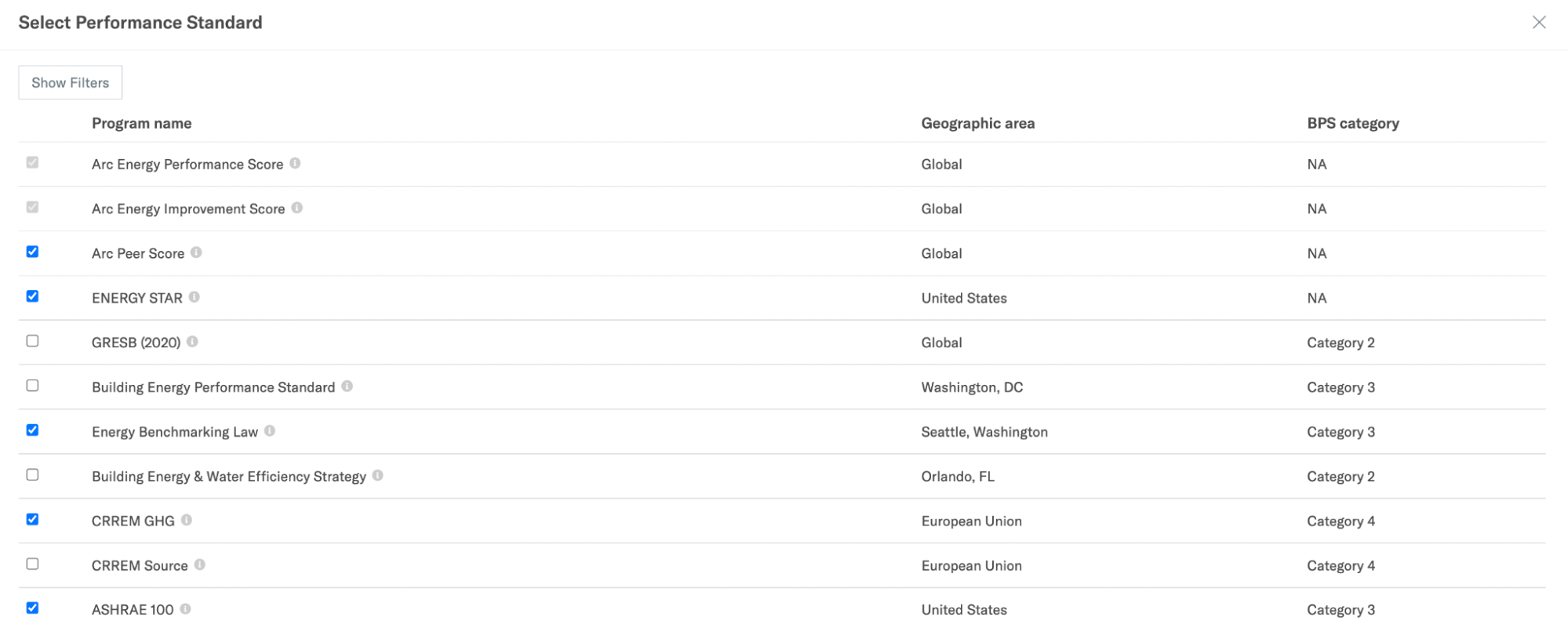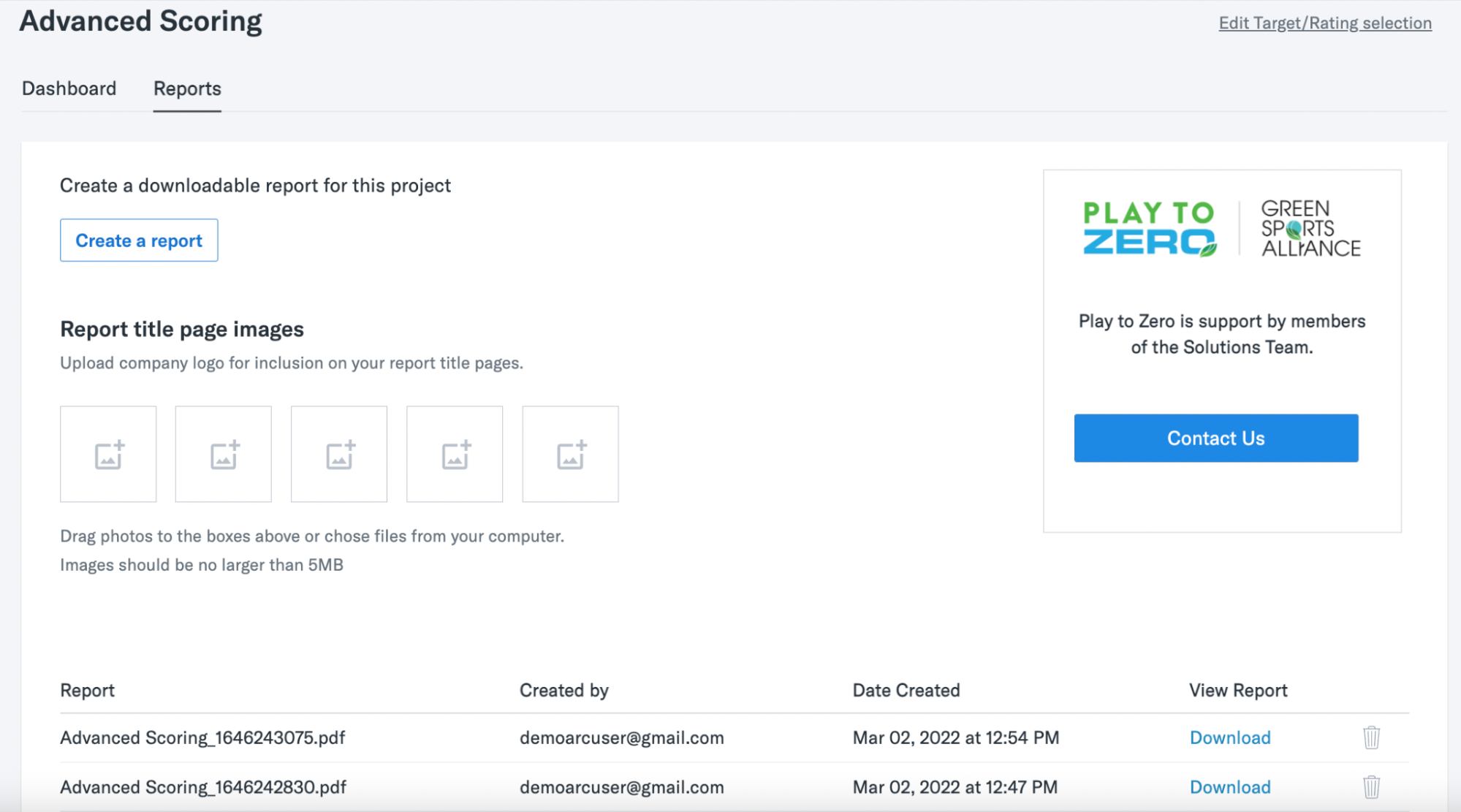
- Provides new capabilities to track and score real world performance against a growing set of Building Performance Standards and scores
- Includes options to compare performance to thresholds (e.g., Washington DC Building Energy Performance Standard), decarbonization trajectories (e.g., Boston Building Energy Reduction and Disclosure Ordinance), and improvement (e.g., Play to Zero)
- Is available to all Arc Essentials subscribers
Background
Buildings contribute to 36% of economy-wide energy consumption and around 40% of annual greenhouse gas emissions. Any credible plan to achieve emissions consistent with IPCC’s 1.5 degree warming will require significant improvements in building energy efficiency, changes in energy supply, and reductions in building-related emissions. Cities, counties, states, and countries all around the world have created building performance standards (BPS) as a foundational tool in this decarbonization effort.
Arc supports BPS with its new Advanced Scoring project tools – available to all Arc Essentials users. Advanced Scoring tools enable users to compare measured performance to a growing library of performance standards, such as New York Local Law 97, Carbon Risk Real Estate Monitor (CRREM), and more than 20 others.
Types of Scores
Advanced Scoring provides multiple ways to interpret and score energy and GHG emissions. This includes our in-house Arc Performance and Improvement Scores and a wide-variety of Building Performance Standards. The tool supports year-over-year decarbonization pathways, relative improvement (e.g., change between a baseline and performance period), and thresholds, such as ENERGY STAR performance scores mandated by local government regulation. The following charts illustrate different program types and their outputs:
Pathways, such as the Carbon Risk Real Estate Monitor

Improvement, such as the Play to Zero program
https://www.iea.org/reports/global-status-report-for-buildings-and-cons…

Thresholds, such as the Washington DC Building Energy Performance Standards

Getting Started
#1 Turn on the Tools
Advanced Scoring is available to all Arc Essentials users. They can access Advanced Scoring under Project Tools. Users will see one highlighted score and list of available programs. Clicking a program opens a new window with more details. Some programs require additional selections, such as property type or decarbonization pathway.
#2 Analyze Performance
Advanced Scoring users have three primary options:
- Select a target rating
- Select a “featured” overview rating
- Drill down into individual ratings
Advanced Scoring presents a significant, growing library of ratings. Only a few of these are likely to be directly relevant to a specific project. Selecting “Edit Target/Rating…” provides a picklist of options. Arc Energy Performance Score and Arc Energy Improvement Score appear by default, other options can be toggled on and off.

Next, users can further refine the presentation of ratings by selecting an “overview selection”. This pins one rating to the top of the list.

Finally, the table below displays the selected ratings along with an assessment of performance, typically pass or fail evaluation and, if applicable, a year. This supports an interpretation of “The selected performance equals or exceeds (‘passes’) standard requirements through the year 20XX.”

#3 Communicate Results
Advanced Scoring can generate a summary report including all available performance standards. A sample report can be found here.

Considerations
Advanced Scoring users need to be aware of potential limitations and caveats. There are two critical considerations:
- The assessment is only as good as the data provided. Errors and omissions in data change ratings.
- The assessment relies on an interpretation of policies. The Arc team does its best to translate BPS criteria into logical statements and mathematical relationships. This is not always easy, and policies and their interpretation can change.
This all means that users need to be conscious of data quality and alert to circumstances surrounding any particular BPS. We always appreciate feedback and insights about BPS – please reach out to us at contact@arcskoru.com
Next Steps
Advanced Scoring is a foundational part of Arc, and it will continue to evolve and improve over time. We are working on a significant and growing list of Building Performance Standards. We anticipate adding and updating programs over time. We are also exploring the ability for organizations and projects to create their own performance standards. The bottomline is: Get started today and watch this space for new capabilities in the months ahead.
